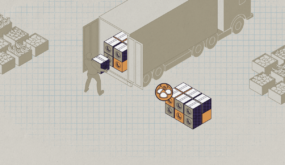Posted on 15 Mar 2018
How would you assess the current state of the debate around decriminalization of drugs?
There have certainly been positive developments since the Global Commission issued its report on the failed “war on drugs” in 2011. Countries around the world have built on existing best practices from Switzerland, Portugal, the Czech Republic and others, with reforms being adopted or considered in countries as politically and culturally diverse as Jamaica, Seychelles, Tunisia, Ghana and Myanmar. Uruguay and several US states have even moved beyond decriminalization to regulate the recreational use of cannabis. Canada is undertaking a similar reform.
There is no doubt that the consensus on which the international drug control regime was established over 50 years ago has been broken. However, the decriminalization of drug use and possession for personal use is still viewed with suspicion. Here, the argument is too often informed by an ideological perspective, inspired by fears and misconceptions. It is therefore essential to inform people about the effects of psychoactive substances and to demonstrate the difference between the health risks that are directly linked to the use of drugs and the harms caused by drug policies, which lead people to consume in hazardous ways.
Decriminalization is the one central legal provision that would allow people who use drugs, a diverse community who have one thing in common – marginalization, to access state services without fear of punishment. Decriminalization enables the state to shift the focus of drug policy to public health and social integration.
In your experience, is the issue of decriminalization and the harm-reduction approach sufficiently linked to reducing the harms caused by organized crime?
Harm-reduction measures and decriminalization will not directly reduce demand if they are not linked with other responses to the problems faced by people who use drugs, such as prevention, employment and housing, etc. In combination, however, such interventions weaken the power that drug suppliers exert over their customers, while treatment options such as substitution-based therapies remove people who use drugs from the illegal market.
To really reduce the harms caused by organized crime, the entire focus needs to change. The harassment and incarceration of low-level actors in the drug trade (i.e. couriers, cultivators, street dealers), who engage in the trade primarily out of necessity and who are most often themselves victims of organized crime, should be replaced by alternative measures. Law-enforcement resources must be shifted so that they target the most disruptive and violent agents in the drug trade. International cooperation to address money laundering and corruption related to the illegal drug trade must also be strengthened. Harm reduction will not be achieved through major crackdowns, but through intelligence gathering, infiltration and retracing laundered funds.
Ultimately, however, we need to progress towards legally regulated drug markets. Only through sensible regulation, accompanied by social and economic development for affected communities, can we hope to reduce the influence of organized-crime groups effectively and lastingly. We know these groups are resilient. Nevertheless, it is time for states to assume their full responsibility and to take control.
Are the debates on drug policy fundamentally different in regions that are primarily affected by drug production, as opposed to drug consumption? Do these different ends of the global market need to be approached with different policy frameworks?
Certainly, producer countries face different challenges from consumer countries. It is important to note, however, that with the increasing importance of synthetic drugs, the rise of local production in Europe and North America, and the darknet, it is no longer possible to make easy distinctions between producers and consumers. Trafficking routes have also shifted markedly in recent years. So, while policies need to be adapted to the particular circumstances of a country or region, it should be possible to offer a general policy framework that favours treatment and a locally adaptable international response to address the transnational nature of organized crime. There isn’t a one-size-fits-all solution to drug policy reform, other than a need to adhere to universal human rights.
Why are models for drug policy, such as the Swiss or Portuguese approach, which have on the face of it been successful, not replicated more often elsewhere?
Harm reduction and innovative treatments are often afforded a high-priority status only if a public-health emergency is recognized as a threat to the wider population. Politicians are likely to address a problem more energetically if it affects the majority, rather than initiate complex policy reforms that appear to help only a small minority – and all the more so if it is a stigmatized minority. In places where serious efforts have been made to do this, however, we have seen successes.
In my own country, Switzerland, citizens voted over 10 times – at the municipal, cantonal or national levels – on specific harm-reduction measures, heroin-based treatment or reforms of narcotics law. Each time, the campaigns provided an opportunity to explain, to discuss, to address the stigmatization of people who use drugs and, finally, to convince the electorate.
In Portugal, it was the strong will of the president and the prime minister (President Sampaio, my fellow member of the Global Commission on Drug Policy, and António Guterres, currently secretary general of the UN) to replace a punitive policy approach to drug consumption with one that is centred on health and social support services.
Worldwide, there has been a clear trend to adapt similar reforms to local needs, and more countries are moving towards health-centred approaches. Some form of decriminalization now exists in over 23 countries. It is time now to focus efforts and open the debate in the developing world, which takes a heavy toll from organized crime and drug-related violence, but has very limited harm-reduction services or viable treatment options.
Which parts of the world will be the drivers for the next stage of the drug debate?
Interestingly, several countries in South East Asia, a region known for its highly repressive drug laws, have begun to take a new direction. However, it is too early to say that this part of the world will act as a driver.
The African continent, which has become a hub for trafficking routes from Asia or from America towards Europe, is facing an increase in consumption, as was earlier the case with Latin American transit countries. Until now, the levels of drug-related violence seen in other transit regions have not reached Africa, but there are fears that a militarized response could lead to an escalation there as well. This has been clearly stated in the report, Not Just In Transit – Drugs, the State, and Society in West Africa by the West Africa Commission on Drugs, which also advocates for harm reduction, treatment and even decriminalization
Latin America, Canada and Western Europe will continue to be the regions where reforms will inspire and support further reforms elsewhere.
Following the UN General Assembly Special Session on Drugs (UNGASS), representatives from the Global Commission on Drug Policy expressed disappointment with the UNGASS outcome document. What were the key problems with the document that caused this?
Although there were some positive outcomes from UNGASS, the general disappointment revolved around a sense of a missed opportunity. Many states and UN agencies highlighted the negative consequences of the international drug control regime on human rights, development and health. There were also innovative proposals on how to improve policies, particularly with regard to drug users and low-level actors in the supply chain.
However, the outcome document continues to uphold the three international conventions of 1961, 1972 and 1988 as ‘cornerstones’ of international policies, even while it recognizes that human rights, public health, development and access to medicine should be added to the traditional aims of reducing supply, reducing demand and collaborating in the fight against crime. The document also fails to state that the death penalty for drug offences is clearly in violation of international law.
It also missed the opportunity to discuss the legal regulation of cannabis. The issue here is that the UN risks becoming irrelevant in this debate if countries move ahead in different directions and international law is disregarded.
As the 61st session of the Commission on Narcotic Drugs gets under way in Vienna, legalization continues to be a central and divisive issue within drug policy debates. To reflect the breadth of debate, the Global Initiative has sought input from leading experts who hold different views on the benefits of legalization.
Opinion pieces are the authors’ own views and do not necessarily reflect those of the GI.



